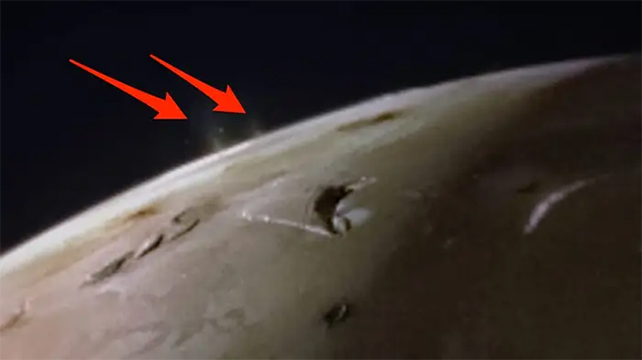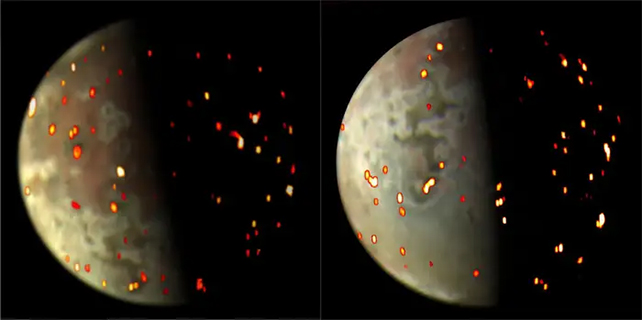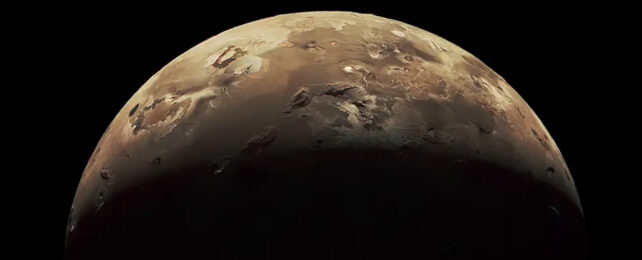NASA's Juno spacecraft snapped detailed images of the most volcanically active world in our Solar System on Saturday. During this close fly-by, the spacecraft spotted plumes of volcanic activity erupting from Io's surface in real-time.
This encounter was the second in a set of two close fly-bys designed to provide new insight into the fiery phenomena that lurk beneath Io's surface.
They are humanity's closest encounters with Io in the last 22 years, surveying it at a distance of 930 miles. Here are the striking first images.
A 'tortured moon'
Io is a "tortured moon" being pushed and pulled by competing gravitational forces.
On one end is Jupiter'sherculean mass tugging it toward the planet, and on another are two neighboring moons,EuropaandGanymede, said NASA's Juno mission Principal Investigator Scott Bolton.
As a result, this gravitational tug-of-war causes friction across the entire world as it's pulled one way and then another. The friction heats Io up, which is the process that drives it's volcanic activity.
Io has about 400active volcanoeson its surface. You can some erupting gas into space in the close-up image below that Juno snapped on February 3:

While Io is only slightly larger than Earth's moon, its volcanoes are far larger than anything here and can spew fountains of boiling-hot lava dozens of miles in the air, according to NASA.
For example, its largest volcano, Loki Patera, is roughly twice the size of Mauna Loa, the largest active volcano on Earth.

The Juno spacecraft has orbited Jupiter every 38 days since 2016. Now in an extended mission phase, the spacecraft will explore the full Jovian system – Jupiter and its rings and moons – through September 2025.
With these fly-bys, Juno mission scientists hope to gain a deeper, more detailed understanding of what drives Io's explosive activity. Currently, there are two competing theories.
Either Io's intense volcanism is due to a global magma ocean churning beneath the surface, or to the moon's solid core of hot metal. Perhaps the answer will reveal itself in the coming months as scientists dig into the data.
This article was originally published by Business Insider.
More from Business Insider: